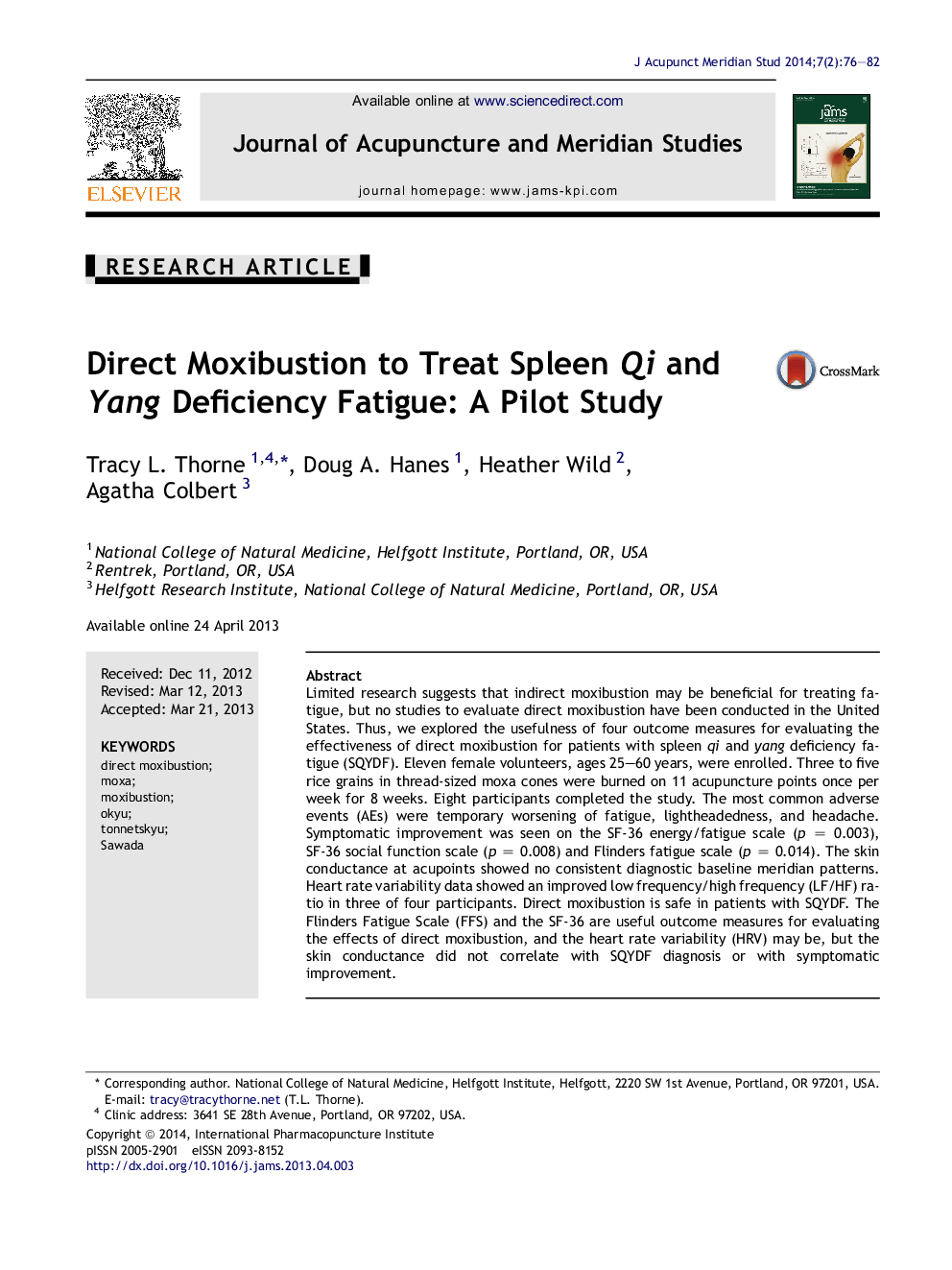| کد مقاله | کد نشریه | سال انتشار | مقاله انگلیسی | نسخه تمام متن |
|---|---|---|---|---|
| 3098674 | 1191050 | 2014 | 7 صفحه PDF | دانلود رایگان |

Limited research suggests that indirect moxibustion may be beneficial for treating fatigue, but no studies to evaluate direct moxibustion have been conducted in the United States. Thus, we explored the usefulness of four outcome measures for evaluating the effectiveness of direct moxibustion for patients with spleen qi and yang deficiency fatigue (SQYDF). Eleven female volunteers, ages 25–60 years, were enrolled. Three to five rice grains in thread-sized moxa cones were burned on 11 acupuncture points once per week for 8 weeks. Eight participants completed the study. The most common adverse events (AEs) were temporary worsening of fatigue, lightheadedness, and headache. Symptomatic improvement was seen on the SF-36 energy/fatigue scale (p = 0.003), SF-36 social function scale (p = 0.008) and Flinders fatigue scale (p = 0.014). The skin conductance at acupoints showed no consistent diagnostic baseline meridian patterns. Heart rate variability data showed an improved low frequency/high frequency (LF/HF) ratio in three of four participants. Direct moxibustion is safe in patients with SQYDF. The Flinders Fatigue Scale (FFS) and the SF-36 are useful outcome measures for evaluating the effects of direct moxibustion, and the heart rate variability (HRV) may be, but the skin conductance did not correlate with SQYDF diagnosis or with symptomatic improvement.
Journal: Journal of Acupuncture and Meridian Studies - Volume 7, Issue 2, April 2014, Pages 76–82